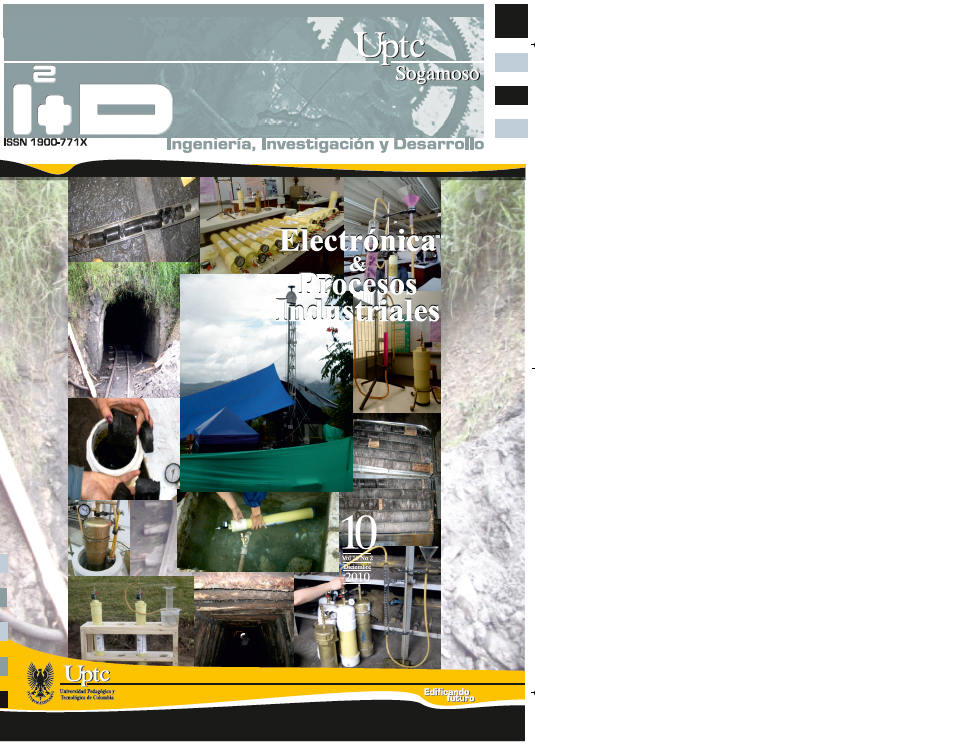Mineralogical Characterization of Rocks Composing the Volcanic Body that Crops Out near Town of Iza, Boyacá, Colombia. Petrography, Metallography and Elemental Analysis by Scanning Electronic Microscope

Abstract
We present here the results of detailed analysis of four samples from the Iza Volcanic body. The analysis were done at Gmas* Laboratory using and array of tools available there: Optical microscopy for petrographic, and metallographic study of polished thin sections; a SEM with BSE, SE and EDAX allowed the elemental chemical composition of minerals present in the samples, and finally we use XRD for mineral identification. The strong hydrothermal alteration of the Iza volcanic rocks was evident in the all the analyses that were carried out, we identified the presence of minerals as the tridymite, the opal, the chalcedony, epidote (pistacita), and alunite , this last mineral is usually replacing potassic feldspars. The metallographic study showed a prevalence of the pyrite and the rutile in relation to the total of metallic minerals in veins and its surrounding area. By means of the optical petrography and elemental analysis with the EDAX, it was possible the identification of the amphiboles. On the other hand, X-ray diffraction was of vital importance in determining the presence of sanidine (highly disordered). We also found that sanidine is not the only K2O rich phase on these volcanic rocks.
Keywords
amphiboles, hydrothermal alteration, hydrothermal phase, magmatic phase, rutile, sanidine
References
- Garzón, T. (2003): Geoquímica y potencial minero asociado a los cuerpos volcánicos en la región de Paipa, Departamento de Boyacá, Colombia. (Tesis de Grado).- 83 p., Universidad Nacional de Colombia, Departamento de Geociencias, Bogotá.
- Hernández, G & osorio, O. (1990): Geología, análisis petrográfico y químico de las rocas volcánicas del suroriente de Paipa (Boyacá-Colombia). (Tesis de Grado).- 91 p., Universidad Nacional de Colombia, Departamento de Geociencias, Bogotá.
- Hibbard, J.M. (1995): Petrography to petrogenesis.- 589 p., Prentice Hall, New Jersey.
- Hurbult, C.S. (1976): Manual de mineralogía de Dana.- 653 p., Reverté, Barcelona.
- Ineson, P.R. (1989): Introduction to practical ore microscopy.- 175 p., Longman Scientific & Technical, Singapore.
- Kerr, P.F. (1965): Mineralogía Óptica.- 433 p., McGraw Hill, Madrid.
- Maksaev, V. (2001): Alteración hidrotermal.- 1-14 p., Universidad de Chile, Departamento de Geología, Santiago.
- Martínez, A. (1989): Geologie de la region D` Iza, Boyaca. Cordillera Orientale de Colombia. (Diplome de mineralogie et geologie) - 200 p., Instituts de Mineralogie et Geologie, Universite de Lusanne.
- Mora, H.; trenkamp, R.; kellogg, J.; Freymueller, J. & Ordóñez, M. (2002): Resultados del uso de geodesia satelital para estudios geodinámicos en Colombia, p. 15, INGEOMINAS, Bogotá.
- Petrick, S. & y Castillo, R. (2004): Método de Rietveld para el estudio de estructuras cristalinas, p. 5, Facultad de Ciencias, Universidad Nacional de Ingeniería, Lima.
- Proctor, P.; Peterson, P. & Kackstaetter, U. (1991): Mineral Rock Handbook, p. 256, Macmillan Publishing Company, New York.
- Robb, L. (2005): Introduction to ore-forming processes., p. 373, Blackwell Publishing, Malden.
- Romero, F.H. & Rincon, M.A. (1990): Características petrográficas y geoquímicas de las rocas volcánicas de Iza (Departamento de Boyacá, Colombia).- Geol. Colombiana, 17, pp. 159 – 168, Bogotá.
- Streckeisen, A.L. (1973): Classification and nomenclature recommended by the IUGS Subcommission on the Systematics of Igneous rocks.- Geotimes, Vol. 18, no.10, p. 26 – 30.